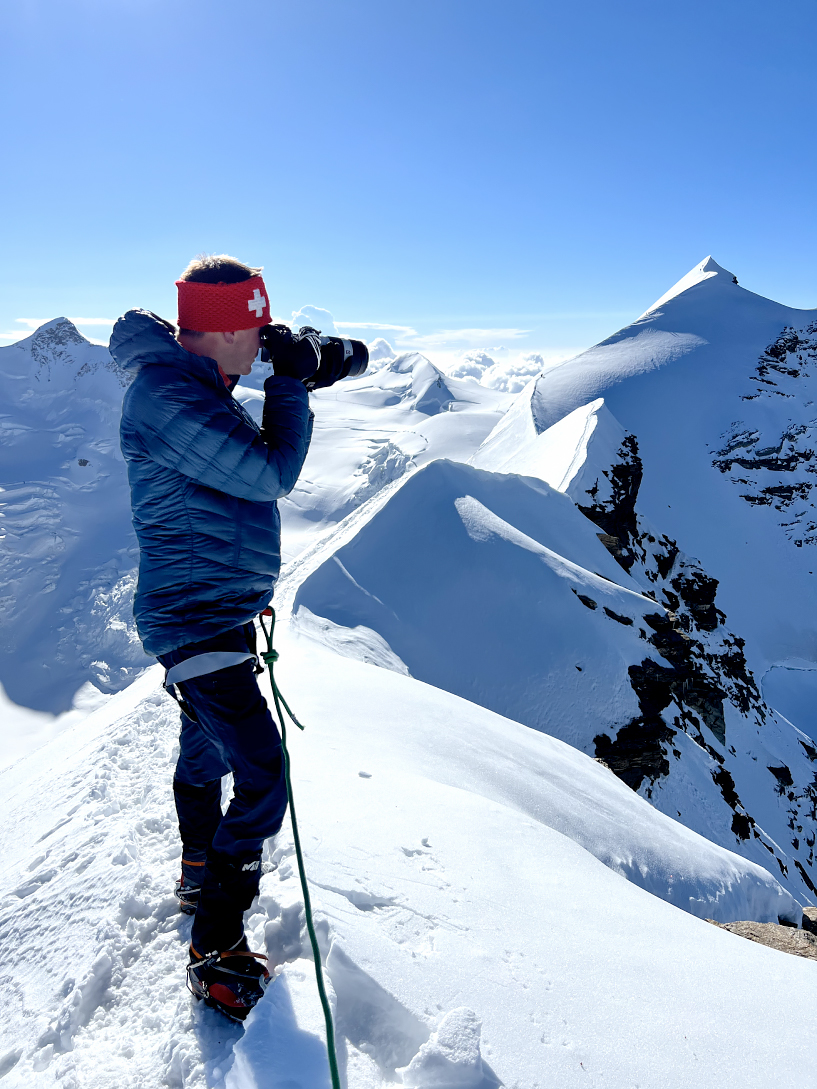I live at the service of these impetuous guardians of the eternal snows. Watching their light, vibrating to the rhythm of their beauty has become second nature. I like to live these moments of contemplation of panoramas both frozen and changing, which feed me with their greatness.
In these moments, I taste peace and melt into the landscape. When the clouds are absent, when my gaze goes on forever and I can let my inspiration flow freely. Without any particular goal. Just to live. To let myself be carried.
At other times, I become a truth hunter. I look for the ephemeral moments. The coming storm. The elements colliding. The wind, the air, the rock, creating a chaos that engulfs me in intense and intoxicating sensations. These minutes where I hold my breath so much they are nimbered of a perfection which exceeds me and carries me in a different space. A space that my eye and its accomplice, my camera, know how to capture. Suddenly, everything calms down. Just after the fin of the world, the revelation of another world arrives. Before my amazed gaze, my senses on the alert, the clouds are torn apart like the curtain rises on a new show. The highest summits are adorned with another light, a new contrast.
Nature creates before my eyes. Trembling with an inner joy, I try to capture impermanence. It is like a miracle always renewed. Just after the storm, when the first rays of sunlight illuminate the peaks with their royal light.
My daily life is punctuated by the study of weather forecasts. Detecting the approach of the forces of nature. A subtle alliance between intuition and the rational study of the elements. I am at one with nature, who is the chief creative artist...and I the humble craftsman.
Mixture of experience and naivety, dancing alchemy of summits and elements, fusion between nature and the human being that I am. Who am I in front of all this? A stardust, present, vibrating, panting in the heart of the mystery of life. I aspire to the mastery of the moment which however escapes...
In the end, should I really try to control the moment? When I have everything in place with rigor and yet failure looms, I let my heart speak. And then, sometimes, the miracle happens. This miracle that floods me with joy. I am happy to share with you some of the nuggets I brought back from these journeys to the end of my dreams...
My quest for an ever-renewed perfection, nature has offered it to me so that I can offer it to you in turn. I hope you will have as much pleasure in dreaming in front of these photos as I had in looking for the perfect moment, the right moment.
